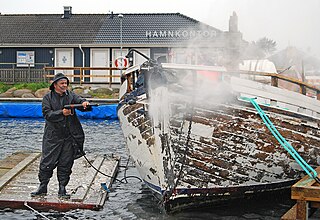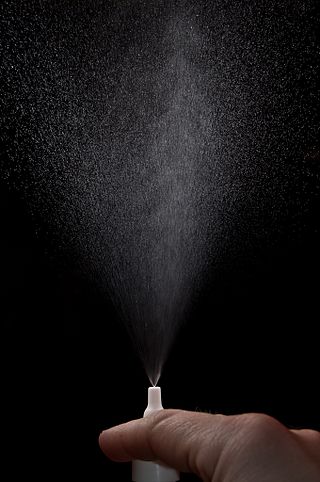
Irrigation is the practice of applying controlled amounts of water to land to help grow crops, landscape plants, and lawns. Irrigation has been a key aspect of agriculture for over 5,000 years and has been developed by many cultures around the world. Irrigation helps to grow crops, maintain landscapes, and revegetate disturbed soils in dry areas and during times of below-average rainfall. In addition to these uses, irrigation is also employed to protect crops from frost, suppress weed growth in grain fields, and prevent soil consolidation. It is also used to cool livestock, reduce dust, dispose of sewage, and support mining operations. Drainage, which involves the removal of surface and sub-surface water from a given location, is often studied in conjunction with irrigation.

Center-pivot irrigation, also called water-wheel and circle irrigation, is a method of crop irrigation in which equipment rotates around a pivot and crops are watered with sprinklers. A circular area centered on the pivot is irrigated, often creating a circular pattern in crops when viewed from above. Most center pivots were initially water-powered, however today most are propelled by electric motors.

A fire sprinkler system is an active fire protection method, consisting of a water supply system providing adequate pressure and flowrate to a water distribution piping system, to which fire sprinklers are connected. Although initially used only in factories and large commercial buildings, systems for homes and small buildings are now available at a cost-effective price.

A nozzle is a device designed to control the direction or characteristics of a fluid flow as it exits an enclosed chamber or pipe.

Drip irrigation or trickle irrigation is a type of micro-irrigation system that has the potential to save water and nutrients by allowing water to drip slowly to the roots of plants, either from above the soil surface or buried below the surface. The goal is to place water directly into the root zone and minimize evaporation. Drip irrigation systems distribute water through a network of valves, pipes, tubing, and emitters. Depending on how well designed, installed, maintained, and operated it is, a drip irrigation system can be more efficient than other types of irrigation systems, such as surface irrigation or sprinkler irrigation.

In fluid mechanics, a splash is a sudden disturbance to the otherwise quiescent free surface of a liquid. The disturbance is typically caused by a solid object suddenly hitting the surface, although splashes can occur in which moving liquid supplies the energy. This use of the word is onomatopoeic; in the past, the term "plash" has also been used.

A fire sprinkler or sprinkler head is the component of a fire sprinkler system that discharges water when the effects of a fire have been detected, such as when a predetermined temperature has been exceeded. Fire sprinklers are extensively used worldwide, with over 40 million sprinkler heads fitted each year. In buildings protected by properly designed and maintained fire sprinklers, over 99% of fires were controlled by fire sprinklers alone.

An irrigation sprinkler is a device used to irrigate (water) agricultural crops, lawns, landscapes, golf courses, and other areas. They are also used for cooling and for the control of airborne dust. Sprinkler irrigation is the method of applying water in a controlled manner in way similar to rainfall. The water is distributed through a network that may consist of pumps, valves, pipes, and sprinklers.

Pressure washing or power washing is the use of high-pressure water spray to remove loose paint, mold, grime, dust, mud, and dirt from surfaces and objects such as buildings, vehicles and concrete surfaces. The volume of a mechanical pressure washer is expressed in gallons or liters per minute, often designed into the pump and not variable. The pressure, expressed in pounds per square inch, pascals, or bar, is designed into the pump but can be varied by adjusting the unloader valve or using specialized nozzle tips. Machines that produce pressures from 750 to 30,000 psi or more are available.
Hunter Industries is a manufacturer of irrigation and outdoor lighting equipment for the landscaping, residential, commercial, agricultural, and golf course industries, based in San Marcos, California. Hunter Industries also offers sanitary dispensing products such as automatic paper towel and soap dispensers. It is the second largest employer in San Marcos after the San Marcos Unified School District.

A sprayer is a device used to spray a liquid, where sprayers are commonly used for projection of water, weed killers, crop performance materials, pest maintenance chemicals, as well as manufacturing and production line ingredients. In agriculture, a sprayer is a piece of equipment that is used to apply herbicides, pesticides, and fertilizers on agricultural crops. Sprayers range in size from man-portable units to trailed sprayers that are connected to a tractor, to self-propelled units similar to tractors with boom mounts of 4–30 feet (1.2–9.1 m) up to 60–151 feet (18–46 m) in length depending on engineering design for tractor and land size.

A spray nozzle or atomizer is a device that facilitates the dispersion of a liquid by the formation of a spray. The production of a spray requires the fragmentation of liquid structures, such as liquid sheets or ligaments, into droplets, often by using kinetic energy to overcome the cost of creating additional surface area. A wide variety of spray nozzles exist, that make use of one or multiple liquid breakup mechanisms, which can be divided into three categories: liquid sheet breakup, jets and capillary waves. Spray nozzles are of great importance for many applications, where the spray nozzle is designed to have the right spray characteristics.
Rivulis is a global manufacturer and provider of complete micro and drip irrigation systems and solutions for seasonal horticulture, orchards, vineyards, row crops, SDI and greenhouse, soilless, hydroponic applications. Founded in 1966 as Plastro Irrigation Systems Ltd, Rivulis is headquartered in Kibbutz Gvat, Jezreel Valley, Israel. The company represents an integration of four industry pioneers and veterans: Plastro, T-Systems, Roberts Irrigation, and Eurodrip. It has 3,300 business partners worldwide, and a wholesale retail and vast dealer network in over 120 countries. The company operates 16 factories worldwide and has 2,000 employees. Rivulis has multiple global design centers and 3 R&D centers in agricultural hotspots of Israel, California, and Greece.

An impact sprinkler is a type of irrigation sprinkler in which the sprinkler head, driven in a circular motion by the force of the outgoing water, pivots on a bearing on top of its threaded attachment nut. Invented in 1933 by Orton Englehart, it quickly found widespread use. Though it has in many situations been replaced by gear-driven "rotor heads", many varieties of impact sprinkler remain in use.

Ultra-low volume (ULV) application of pesticides has been defined as spraying at a Volume Application Rate (VAR) of less than 5 L/ha for field crops or less than 50 L/ha for tree/bush crops. VARs of 0.25 – 2 L/ha are typical for aerial ULV application to forest or migratory pests. In order to maintain efficacy at such low rates, droplet size must be rigorously controlled in order to minimise waste: this is Controlled Droplet Application (CDA). Although often designed for non-evaporative formulations, ULV equipment may sometimes be adapted for use with water, often at Very Low volume VAR.

Ultrasonic nozzles are a type of spray nozzle that use high frequency vibrations produced by piezoelectric transducers acting upon the nozzle tip that create capillary waves in a liquid film. Once the amplitude of the capillary waves reaches a critical height, they become too tall to support themselves and tiny droplets fall off the tip of each wave resulting in atomization.

A spray is a dynamic collection of drops dispersed in a gas. The process of forming a spray is known as atomization. A spray nozzle is the device used to generate a spray. The two main uses of sprays are to distribute material over a cross-section and to generate liquid surface area. There are thousands of applications in which sprays allow material to be used most efficiently. The spray characteristics required must be understood in order to select the most appropriate technology, optimal device and size.

Micro-irrigation, also called Micro-spray,localized, low-volume, low-flow, or trickle irrigation, is an irrigation method with lower water pressure and flow than a traditional sprinkler system. Low-volume irrigation is used in agriculture for row crops, orchards, and vineyards. It is also used in horticulture in wholesale nurseries, in landscaping for civic, commercial, and private landscapes and gardens, and in the science and practice of restoration ecology and environmental remediation. The lower volume allows the water to be absorbed into slow-percolation soils such as clay, minimizing runoff.
In the irrigation industry, matched precipitation rate (MPR) is a term that is used to calculate the amount of precipitation in a given area is uniform. In order to be "matched" all sprinkler heads in a given zone must have the same rate of precipitation. This can be achieved by matching the gallonage of a standard rotor to its arc and reducing range accordingly (i.e. 2 gallons at 90 degrees, 4 gallons at 180 degrees, or 8 gallons if the head does a full circle) or by using MPR nozzles or sprinklers. Virtually all major sprinkler manufactures offer some type of MPR nozzle or sprinkler. The primary benefit and main goal of MPR sprinklers is to prevent water waste from run-off while still ensuring that the area receives adequate moisture.

The December 1989 United States cold wave was a series of cold waves into the central and eastern United States from mid-December 1989 through Christmas. On December 21–23, a massive high pressure area pushed many areas into record lows. On the morning of the 22nd, Scottsbluff, Nebraska, experienced −42 °F (−41 °C). The next morning, the front pushed temperatures in Houston down to 7 °F (−14 °C), the 2nd coldest since 1889. On the 24th Miami airport (inland) had a low of 31 °F (−1 °C), and on the 25th, the low was 30 °F (−1 °C), and Key West had its 4th lowest temperature on record with a low of 44 °F (7 °C). The wave extended all the way into Mexico's Lower Rio Grande Valley, resulting in tens of millions of dollars in damage to the agricultural sector. The December cold wave was actually the second of the year, after a February cold wave had extended into Texas.














